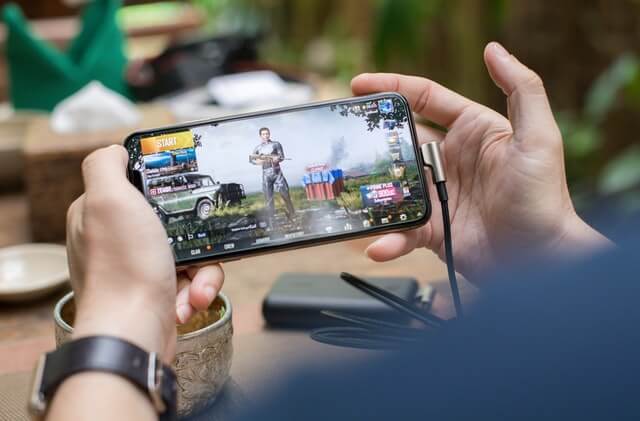There has been an increase of almost 50% in the number of mobile gamers during the first quarter of 2020 because of the global pandemic. Gaming has become a common habit for many people. Some games are not only refreshing but also give new energy. A good mobile game, for example, allows people to embark on an adventurous journey and can help gamer relieve their stress. Creating a game that is fascinating and engaging is not an easy task. But if you can crack that, you can make a fortune as a game developer. Mobile game monetization can be a lucrative way to generate revenue.
As per a study published in Statista, the mobile games industry’s total revenue in 2022 will be approximately a whopping 124.90 billion dollars. With a proper marketing strategy and a mobile game monetization model, you can make significant profits.
Mobile game monetization – What is it?
In a nutshell, mobile game monetization is the process that app owners follow to make money through a mobile game app. There are different techniques and strategies that various game developers employ to generate revenue using mobile apps.
Creating a high-quality mobile game requires much thought, knowledge, and effort. On top of it, you also need to use the right resources. It is undoubtedly an expensive affair. Only when the game is profitable can you recover the costs.
Some mobile games become profitable instantly. But most of the time, mobile apps take a lot of time to generate interest in the public or fail. Using the correct methods will help you obtain revenue for your company.
Plan your strategy – Well in Advance
Many developers focus on the main idea of the game since it is the most crucial aspect. However, there are other areas in your strategy that require your attention and thought process. It would be best to think about the business model and the strategies you want to engage in making it a profitable venture.
The plan you have in mind will impact various aspects of the mobile game, such as the game layout, stages, features, level of difficulty, etc. It is one of the prime reasons you must think about the right mobile app monetization model even during the app development phase. Doing this early will help you steer your mobile game app to success.
Photo by SCREEN POST on Unsplash
How can I make money through mobile games?
If you take some time to check the mobile game market (Apple stores or Google Play stores), you will quickly realize the current trend. Many mobile game developers use a free-to-play model to get the public’s interest. They can generate income by exposing the players to in-game ads and microtransactions within the app. This is a common practice that most game developers follow these days.
The alternative version to the free-to-play model is paid apps, for which the user pays upfront to download the app onto their mobile device. This model is less popular, and fewer game developers follow it.
They have to make a one-time purchase to be able to play the mobile game. While it is true that many game developers are showing interest in using the free-to-play (F2P) model, there was a time when paid games were much more popular.
One of the biggest hurdles you face when you pick the F2P model is ensuring that both parties — players and game developers- benefit from it. Players desire to have maximum fun and engagement without spending money, while game developers want to earn as much money as possible with ease.
It is a complex situation. The user experience should be the focus to concentrate on when developing a game. Neglecting the players will only make you get negative reviews and lose users quickly. The advantage of this model is that players already know and expect to see monetization features within the app. If those features are built in in a balanced way and amount, you will likely win the player’s interest.
Mobile game monetization models
If you spend a few minutes browsing the app stores, you will notice that the monetization model that a mobile game follows is included in the game description. Players that plan on downloading a mobile game can use this information to decide if they want to install a particular mobile app.
The information presented here will indicate what monetization features users can expect in a particular game app. For example, they will know if they will get exposed to ads or not.
Here are four popular monetization models that most of F2P games follow:
Photo by Priscilla Du Preez on Unsplash
In-app purchases
IAP is the acronym for In-app purchases. It is the leading monetization model that many mobile game developers follow to generate income.
It is the base on which all the freemium apps stand. Freemium is a combination of two words, free and premium. Users do not have to pay a penny to play the game in this business model. But, if they desire to play or crave more, users of the app need to spend some money. It is the only way for them to experience the premium features of the mobile game.
In-game purchases and microtransactions are the other names for in-app purchases. Players have to pay real money to unlock some of the vital features, such as extra lives, weapons, coins, boosters, and many other elements within the game.
In-game store
You can allow users to purchase various necessary components in the game using an in-game store. Users can select the icon on the home screen to reach this section. Players can use both in-game currency and real money to purchase items in the in-game store.
Consumable and non-consumables
Each game consists of consumable and non-consumable items that people can purchase. Here are the significant differences between these two:
Consumable items:
These are the items or tokens players can purchase and use for a specific time or until they perish. For example, these can be lives, health, and booster packages. Once the player exhausts them, they need to spend money again to refill these tokens. While players can purchase them, the game developers should also freely give away some of these tokens so the user does not always have to spend real money.
Non-consumable items:
These are items that players can purchase once and keep access to it permanently. Examples of non-consumables include characters, a new level of the game, cosmetic items, etc.
In-App Ads
App advertising is one of the most popular ways to generate income on mobile game apps. Players can freely gain access to all the features in the game. But, they have to spend time watching the video ad or other ad formats.
In this model, three parties are involved: players, publishers, and advertisers. The Players or app users who do not wish to spend any money will accept that they will be exposed to advertising while using the app. Publishers or developers want to generate income, and they are ready to publish as many ads as possible. Advertisers are always looking for the right platforms to reach out to their target audience.
What game developers need to be mindful of is that people do not like watching mobile ads, but they are willing to tolerate them. Too many ads can repel users. Players will uninstall the app or quit playing. It is the crucial reason you, as a game developer, should have a proper monetization plan.
Interstitial Ads
Interstitial Ads refer to those ads that suddenly appear when you are busy playing the game and take over the entire screen space. When this occurs, the gameplay pauses, and the app users cannot play further till the time the user watches the whole video. As an app owner, you need to be very careful when planning to use this ad format, as it can be annoying to the user. If you are not careful enough, you will scare your users away.
In Conclusion
For game developers to launch a successful game app that generates revenue and positive user reviews, the developer must focus on the game design and a well-planned mobile app monetization strategy. If you have a good strategy in place, you will quickly start to generate a profit in numerous ways once you launch the game. You can use a single or a combination of various mobile game monetization techniques and strategies to generate income.





